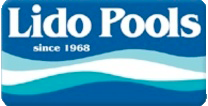- Spas that are referred to as "Stand Alone" are "Self Contained" and come with their own "Spa Pack", a unit that combines a filter, heater and various pumping systems and is housed within the spa skirt or "surround". These spas are commonly utilized when the client desires to use the spa all year long or extending past the desired pool operation period. This system utilizes an electric heater, which takes much longer to heat than a gas-fired furnace. It is for this reason that the spa water would be kept at or close to the desired temperature for use (normally between 101 and 104 degrees F.) otherwise heat recovery would take to long, often hours or even days long if the water is at room temperature. Keeping the water hot all the time means using a spa cover for insulation against heat loss and evaporation. Attention to the chemical balance and sanitization of the spa water is paramount as the constant heat promotes more bacteria build up. State of the art sanitation and filtration methods are very successful in keeping the water purified, however changing of the water should be done every month or so, depending on usage.
- Spas that basically act as a water vessel or "Shell" and rely on an exterior filtration system. This exterior filtration system is usually the pool filtration system or a modified version of it or a dedicated pool-like style filtration system, for the spa. These spas can also run all year long but extra consideration must be given to the support equipment to protect it against extreme cold weather and freezing. It is because of this, that these types of spas are commonly used when the client desires to not use the spa all year long and shut it down when the swimming pool is winterized. As these spas normally utilize a gas-fired furnace to heat the water, the recovery time is quite fast. Therefore, one would typically only heat the spa when they wanted to use it. Heat rise of 80 degree water to 105 degrees could be accomplished in five to ten minutes. The between use "cool down" period allows the disinfectant in the spa water to be more effective as it isn't fighting the extreme temperature and the effects of it. As well, changing of the spa water is less daunting because the dump/fill/heat cycle is only minutes long.
Although any type of spa can be set up to be used in either of the above noted applications, typically:
We at Lido Pools and the Aqua Terra Design Group have evaluated the many spa manufacturers within the industry. We believe the following compilation to be the best of the best, within their unique and specialized niche.





